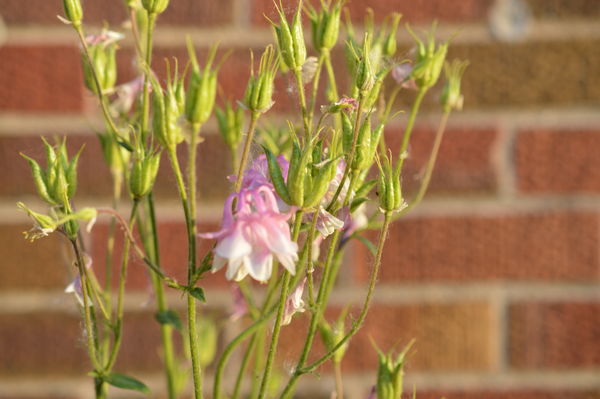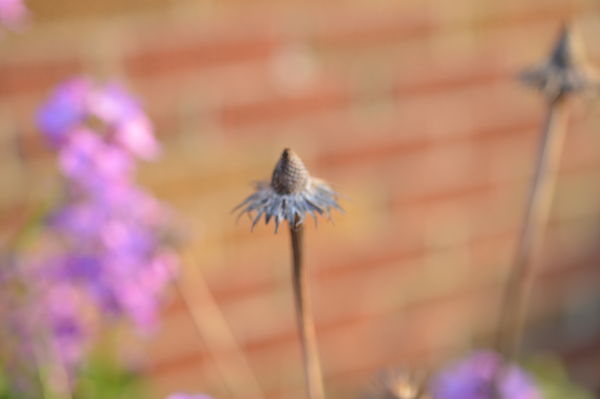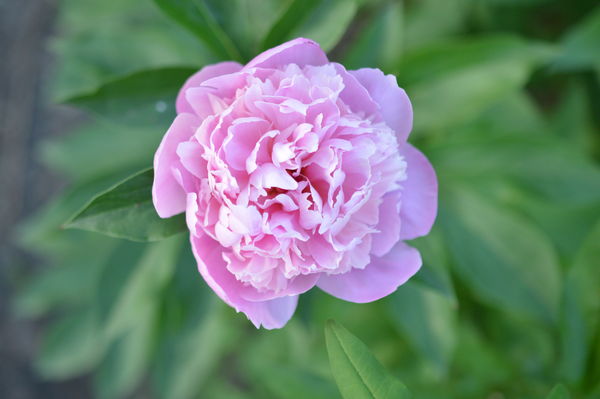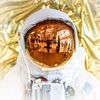Bokeh?!??
Jun 6, 2014 23:14:04 #
Jun 6, 2014 23:34:11 #
Michael66
Loc: Queens, New York
Peterff wrote:
I have been a little busy, so dropped out of the thread for a while. I haven't been able to read all the responses yet, but it still seems that an explanation that enables people to recognize "bokeh" and to differentiate it from mere blur is elusive.
So far my favorite is "fuzzy in the head", since it seems to apply to many of us.
So, you self-appointed Illuminati ...
So far my favorite is "fuzzy in the head", since it seems to apply to many of us.
So, you self-appointed Illuminati ...
The way I see things, there appears to be two basic camps; bokeh == blur and bokeh == pleasing blur.
For me, the first seems pointless, as it merely uses a different word for one we already have; blur.
And the second, as I have grown to understand it, suggests that bokeh is an aesthetic quality of an image. In other words, if there is a pleasing blur, that image has bokeh. Folks wax poetic about how smooth or delicious the bokeh is. Unfortunately, if you show an image with blur in it to ten people, you will most likely get ten different reactions, ranging from utterly dreadful to orgasmic.
Some thought Picasso a genius, others say he was manipulative. Some think Jackson Pollock was one of America's greatest Artists, others think he was a fraud. It is subjective. You can't measure it. You like it or you don't.
But if you like the blur you see, you see bokeh in that image. If you don't like the blur, you just see a blurry mess, not bokeh.
Jun 6, 2014 23:55:28 #
amehta
Loc: Boston
Michael66 wrote:
The way I see things, there appears to be two basi... (show quote)
Maybe I'm by myself, but I'm in a third camp: bokeh is some characteristics of blur. These characteristics include the shape of OOF light point sources and the appearance of edges. These characteristics can have "values" which are be pleasing (good bokeh) or distracting (bad bokeh).
Jun 7, 2014 00:00:49 #
Michael66
Loc: Queens, New York
amehta wrote:
These characteristics include the shape of OOF light point sources and the appearance of edges.
Do you have examples of this? I am not being argumentative, but I think you mentioned something like this before. This sounds different than just the blurring of the the background, which for example, could be the trees behind a person blending into a mass of greens. Let's shelve the good/bad attributes for the time being.
Jun 7, 2014 02:35:13 #
Just for the sake of more information, or more argument, as the case may be, it IS possible that in our western ways, we truly don't understand what Bokeh even is. This has nothing to do with wether you believe it exists or not.
One or two years ago, we had a discussion here, much like this one, but it went very in-depth, with a consideral amount of research into both meaning and pronunciation.
One of the things I discovered(we know it's Japanese), was that it was intertwined with Japenese culture.
Most western art, is in focus, from front to back. Yet when the human eye sees, it only focuses on one point, as does your lens, and in your periferal vision, what's in front and in back of the focus point, is actually out of focus. Maybe we can call that Bokeh. It turns out, that what ever bokeh is, is was already being depicted in Japenese art and woodcuts going back possibly a 1000 years. That's a lot of culture. And in Japenese culture it may be well defined.
Certainly cultures define what is important to then in ways we can not even begin to understand. An example is a tribe in the Amazon, may have 50 distinct words to describe the color green or water, since their culture is inextricably connected to those two.
Many of the Canon 200mm f1.8 lenses where sold in Japan to the Japenese wedding industry. Would it take a rocket scientist to figure out why?
I'm not here to try and make you a believer, that's up to you. H*ll I can't even convince anyone that an f1.2 lens has advantages over an f1.4!! :lol:
SS
One or two years ago, we had a discussion here, much like this one, but it went very in-depth, with a consideral amount of research into both meaning and pronunciation.
One of the things I discovered(we know it's Japanese), was that it was intertwined with Japenese culture.
Most western art, is in focus, from front to back. Yet when the human eye sees, it only focuses on one point, as does your lens, and in your periferal vision, what's in front and in back of the focus point, is actually out of focus. Maybe we can call that Bokeh. It turns out, that what ever bokeh is, is was already being depicted in Japenese art and woodcuts going back possibly a 1000 years. That's a lot of culture. And in Japenese culture it may be well defined.
Certainly cultures define what is important to then in ways we can not even begin to understand. An example is a tribe in the Amazon, may have 50 distinct words to describe the color green or water, since their culture is inextricably connected to those two.
Many of the Canon 200mm f1.8 lenses where sold in Japan to the Japenese wedding industry. Would it take a rocket scientist to figure out why?
I'm not here to try and make you a believer, that's up to you. H*ll I can't even convince anyone that an f1.2 lens has advantages over an f1.4!! :lol:
SS
Jun 7, 2014 11:20:43 #
I have thoroughly enjoyed this discussion. As a DSLR newb, I first learned of "bokeh" only in the past week or so. However, in my photographic past, I used bokeh without even knowing what it was.
Although I was interested in macro from my earliest 35mm days, the bokeh concept probably first presented itself as donuts... yes, I own (present tense) a Minolta 250mm catadiaptric (mirror) lens. Maybe I'm easily impressed, but that lens, despite being slow, was extremely versatile. For starters, it was roughly the same size as my 50mm lens- and pretty much as light, as well- with the shade removed, it was downright tiny!
It made donuts, though, which one either loved or hated. I personally thought they were pretty cool.
A final thought on [i]bokek[i]...
When I first encountered the term, I imagined it being pronounced by the Angry Beavers. Soon after, I thought of Hyacinth Bucket ("...it's pronounced 'boo-key'")
Although I was interested in macro from my earliest 35mm days, the bokeh concept probably first presented itself as donuts... yes, I own (present tense) a Minolta 250mm catadiaptric (mirror) lens. Maybe I'm easily impressed, but that lens, despite being slow, was extremely versatile. For starters, it was roughly the same size as my 50mm lens- and pretty much as light, as well- with the shade removed, it was downright tiny!
It made donuts, though, which one either loved or hated. I personally thought they were pretty cool.
A final thought on [i]bokek[i]...
When I first encountered the term, I imagined it being pronounced by the Angry Beavers. Soon after, I thought of Hyacinth Bucket ("...it's pronounced 'boo-key'")



Jun 7, 2014 11:26:54 #
Jun 7, 2014 11:43:43 #
amehta
Loc: Boston
mdorn wrote:
Personally, I wish we would all just stop saying "Bokeh". :-)
Do we also have to stop saying "sharp"? :-)
Jun 7, 2014 12:14:21 #
amehta wrote:
Do we also have to stop saying "sharp"? :-)
YES! In particular---tack sharp. :-)
Jun 7, 2014 12:17:49 #
Jun 7, 2014 12:51:48 #
hochspeyer wrote:
I thought of Hyacinth Bucket ("...it's pronounced 'boo-key'")
I thought of Hyacinth Bucket ("...it's pronounced 'boo-key'")
HS, welcome to the Hog!
I think you have bokeh confused with nookie!! :lol:
If you go onto the Internet and google, "pronounciation", you will learn the proper way to say it. Good luck.
Again, welcome. ;-)
SS
Jun 7, 2014 13:05:01 #
amehta
Loc: Boston
Michael66 wrote:
Do you have examples of this? I am not being argumentative, but I think you mentioned something like this before. This sounds different than just the blurring of the the background, which for example, could be the trees behind a person blending into a mass of greens. Let's shelve the good/bad attributes for the time being.
I'll use some of the pictures which have already been posted.
With Bret's bee photo (p 1), every "bright" light behind the bee creates its own big dot, sometimes with a ring on the edge. Compare this to dalematt's flower photo (p 4) where much of the bright green of the background has blended together. Similarly, in JennT's flower shot (p 6), the brighter light also blends smoothly.
With Peterff's reflex lens photos (p 2), the background in the pigeon shot has distinct rings, and the heron shot has "edges" from light changes in the water waves.
In zincgt's Lorikeet picture (p 7), the light in the background shows as distinct points which are clearly polygonal with straight edges and visible vertices.
In Saigon's street portrait (p 7), the bright lights are identifiable as reflections off cars and taillights, but having the light spread into a big dot reduces the brightness and makes it less distracting.
With blackrest's owl photo (p 8), the bright light appears as circles with bright edges, and the dots do not blend together.
Is this what you were asking for?
Jun 7, 2014 13:05:42 #
Jun 7, 2014 14:16:41 #
mdorn wrote:
YES! In particular---tack sharp. :-)
Mark, but then, how in the world will we know when something is sharper than sharp?! :lol:
SS
Jun 7, 2014 14:28:11 #
If you want to reply, then register here. Registration is free and your account is created instantly, so you can post right away.



